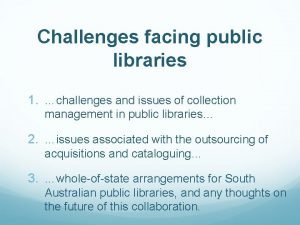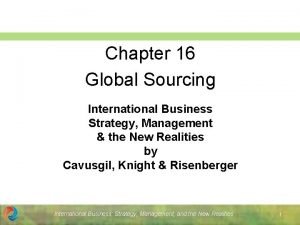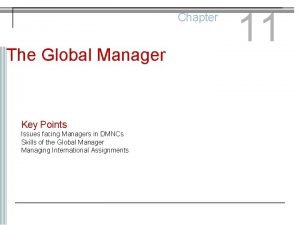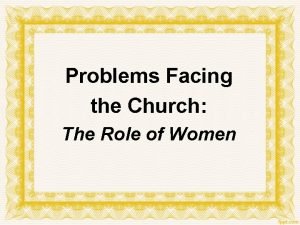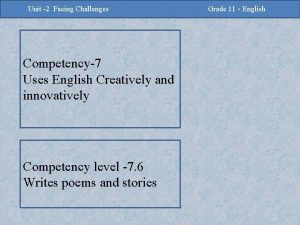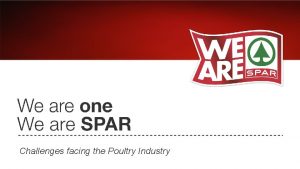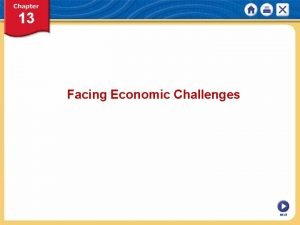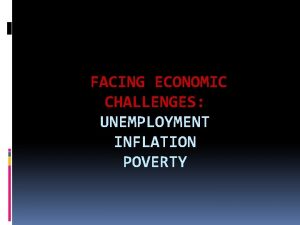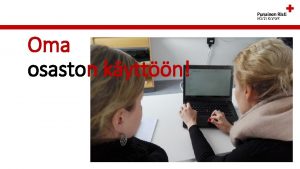Oman Working women Cultural Challenges facing Oman vision











- Slides: 11

Oman Working women: Cultural Challenges facing Oman vision 2020 By Rafiah Al-Talei

Oman Vision 2020 �Human Resources Development: �Enhance women skills to face work challenges on the local , Arab and international levels. �Increase women participation by 2020 to 50% in the age category (15 -64) �Establish Institutions to train and support working women

Omani Women in Numbers Women in private sector 1993 26. 2% and 34. 6% in 2003 �In Public sector 72. 8% and 63. 7% same period. �In agriculture 18. 4% �In 2000 and 2008 women percentage is 18% and 18. 6% in private sector. �In public sector 29. 2% and 41. 2% in the same period.

Omani Women in Numbers �Women in decision making positions 8% in public sector and 11. 7% in private sector. � 24. 7% of women employees have collage or university degree. � 84. 1% have high school diploma and 6. 2% BA in private sector. � 60% have BA degree and 29. 8% high diploma (89. 8%). More skills in public sector.

Omani Women in Numbers � 93% of women public employees in Education 70% and Health 23%. � 78. 2% under 35 in public sector and 21. 8 above (2008) � 76. 8 under 35 in private sector and 33. 2% above. (2008) �Women are 50% of the population which its unemployment rate is 20% around 300, 000 people.

Why Women Work? �Building women personality �Developing skills �Independent Income �Education �Social status �Supporting Family �Getting out of the women classic role. �Participating in the Development and economic programs

Public Sector the First Choice �Better Salaries �Better Annual and Holiday Leaves �Bette retirement Benefits �Better working environment �Less working Hours �Less pressure

Cultural and Social Challenges �Young women study : socially approved majors. Such as education and Health �No supporting services: (nurseries) �No protecting laws (labor Law needs change) �Preference of male employees for some jobs �Women mobility and work opportunities (closer to home) �Training challenges. (travel, training organization)

Gender Relations �From follower to Partner �From dependent to independent �From supervised to supervisor �From less to Equal �BUT �Women still # 2 in the Family �Males dominate the public and the social spheres

Recommendations �Establish and support study and training programs that suit the needs of economic. � provide special training for women with special needs in order to get jobs � consider the role of women as an equal economic partner. � support professional directing programs �Train women at the workplace

Recommendation �Improve the Labor Law (Private sector) �Equal Job and education opportunities �Longer Maternity leave �Provide supporting services for women �Education and awareness programs that helps changing classic women role.
 Mgi vision oman
Mgi vision oman Economic challenges facing contemporary business
Economic challenges facing contemporary business Challenges facing global managers
Challenges facing global managers What are the major challenges facing public libraries
What are the major challenges facing public libraries Challenges facing global sourcing
Challenges facing global sourcing Challenges facing global managers
Challenges facing global managers What are the challenges facing the church today
What are the challenges facing the church today Challenges facing family medicine
Challenges facing family medicine Differentiate between hot working and cold working
Differentiate between hot working and cold working Smart vs hard working
Smart vs hard working Pengerjaan panas dan dingin
Pengerjaan panas dan dingin Advantages of cold working
Advantages of cold working



